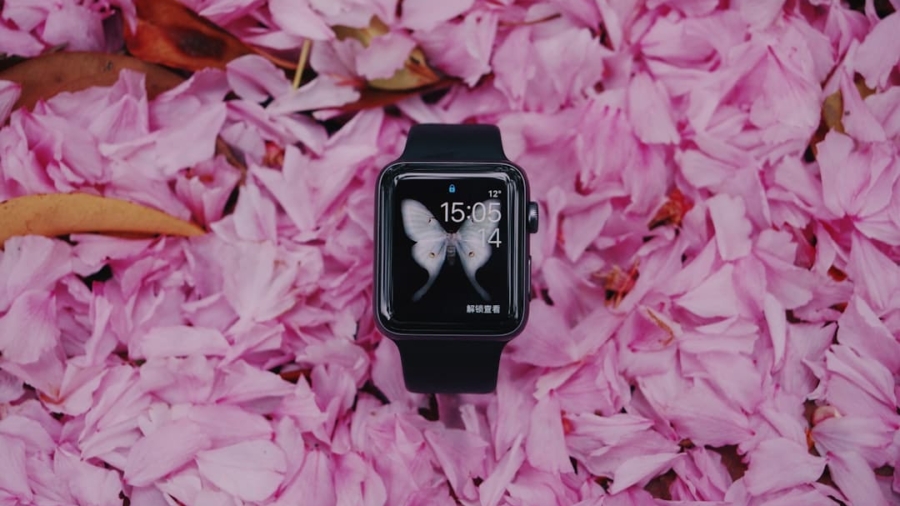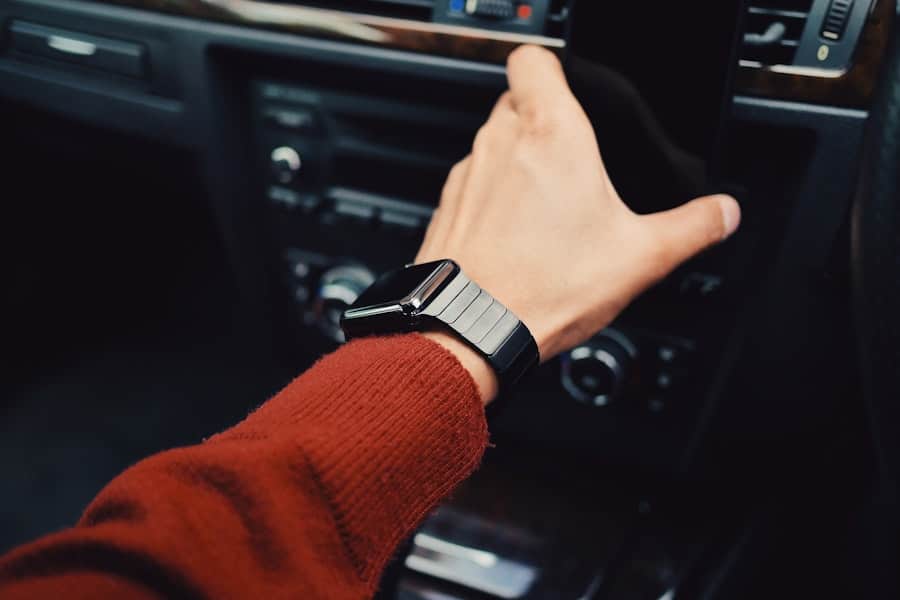In recent years, the proliferation of wearable technology has transformed the landscape of personal health management, particularly in the realm of respiratory monitoring. These devices, which can be worn on the body like a watch or a patch, are designed to continuously track various physiological parameters related to respiratory health. The integration of advanced sensors and data analytics has enabled these devices to provide real-time insights into an individual’s respiratory function, making them invaluable tools for both patients and healthcare providers.
As respiratory diseases such as asthma, chronic obstructive pulmonary disease (COPD), and even COVID-19 continue to pose significant public health challenges, the role of wearable devices in monitoring respiratory health has become increasingly critical. The rise of telemedicine and remote patient monitoring has further accelerated the adoption of these technologies. Patients can now receive timely feedback on their respiratory status without the need for frequent visits to healthcare facilities.
This shift not only enhances patient engagement but also allows for more proactive management of respiratory conditions. As we delve deeper into the various aspects of wearable devices for respiratory monitoring, it becomes evident that these innovations are not merely technological advancements; they represent a paradigm shift in how we approach respiratory health.
Key Takeaways
- Wearable devices for respiratory monitoring are becoming increasingly popular for tracking and managing respiratory issues.
- Monitoring respiratory function is crucial for early detection and management of respiratory issues, especially for individuals with chronic conditions.
- There are various types of wearable devices available for respiratory monitoring, including smartwatches, chest straps, and portable spirometers.
- Wearable devices track respiratory function through sensors that measure parameters such as breathing rate, oxygen saturation, and lung function.
- Alert systems integrated into wearable devices can notify users and healthcare providers of any abnormal respiratory patterns or potential issues.
The Importance of Monitoring Respiratory Issues
Monitoring respiratory issues is essential for several reasons, particularly given the increasing prevalence of chronic respiratory diseases worldwide. According to the World Health Organization (WHO), respiratory diseases account for a significant portion of global morbidity and mortality, with millions of individuals affected by conditions such as asthma and COPD. Regular monitoring can lead to early detection of exacerbations, allowing for timely interventions that can prevent hospitalizations and improve overall quality of life.
For instance, individuals with asthma can benefit from tracking their peak expiratory flow rates, which can signal impending attacks and prompt necessary adjustments in medication or lifestyle. Moreover, monitoring respiratory function is crucial for understanding the impact of environmental factors on lung health. Air quality, allergens, and pollutants can significantly affect individuals with pre-existing respiratory conditions.
Wearable devices equipped with environmental sensors can provide users with real-time data on air quality, enabling them to make informed decisions about outdoor activities and exposure levels. This proactive approach not only empowers patients but also fosters a greater awareness of the interplay between environmental factors and respiratory health.
Types of Wearable Devices for Respiratory Monitoring
The market for wearable devices aimed at respiratory monitoring is diverse, encompassing a range of technologies tailored to different needs and preferences. One prominent category includes smartwatches and fitness trackers that incorporate respiratory metrics into their health monitoring capabilities. These devices often measure heart rate variability, oxygen saturation levels (SpO2), and even breathing patterns during physical activity.
For example, devices like the Apple Watch and Fitbit have integrated features that allow users to monitor their respiratory rate alongside other vital signs. Another category consists of specialized wearable devices designed specifically for individuals with chronic respiratory conditions. These may include portable spirometers that connect to smartphones or dedicated patches that continuously monitor lung function metrics.
For instance, the Spire Health Tag is a small adhesive device that tracks breathing patterns and provides insights into stress levels and overall wellness. Additionally, some companies are developing smart inhalers equipped with sensors that track medication usage and adherence, providing valuable data to both patients and healthcare providers.
How Wearable Devices Track Respiratory Function
Wearable devices utilize a variety of sensors and technologies to track respiratory function effectively. One common method involves photoplethysmography (PPG), which uses light to measure blood volume changes in microvascular tissues. By analyzing these changes, devices can estimate heart rate and derive insights into respiratory patterns.
Additionally, some wearables employ accelerometers to detect movement and posture, which can influence breathing mechanics. Advanced models may incorporate more sophisticated technologies such as impedance pneumography or capnometry. Impedance pneumography measures changes in electrical impedance caused by airflow in the lungs, providing real-time data on breathing patterns and lung volumes.
Capnometers measure the concentration of carbon dioxide in exhaled air, offering insights into ventilation efficiency and potential respiratory distress.
Alert Systems for Respiratory Issues
One of the most significant advantages of wearable devices for respiratory monitoring is their ability to provide real-time alerts for potential issues. Many devices are equipped with algorithms that analyze collected data continuously, allowing them to detect anomalies in breathing patterns or vital signs that may indicate an exacerbation of a respiratory condition. For example, if a user’s respiratory rate exceeds a predefined threshold or if oxygen saturation levels drop below a safe level, the device can send immediate alerts to the user or designated caregivers.
These alert systems can be particularly beneficial for individuals with chronic conditions who may not always be aware of subtle changes in their health status. In some cases, alerts can trigger automatic notifications to healthcare providers, facilitating timely interventions.
This proactive approach not only enhances patient safety but also fosters a collaborative relationship between patients and healthcare professionals.
Benefits of Using Wearable Devices for Respiratory Monitoring
The benefits of using wearable devices for respiratory monitoring extend beyond mere convenience; they encompass improved health outcomes and enhanced patient engagement. One primary advantage is the ability to collect continuous data over extended periods, allowing for a more nuanced understanding of an individual’s respiratory health. Traditional methods of monitoring often rely on sporadic visits to healthcare facilities, which may not capture fluctuations in lung function that occur between appointments.
Wearable devices bridge this gap by providing real-time insights that can inform treatment decisions. Additionally, these devices empower patients by fostering self-management skills. With access to personalized data regarding their respiratory function, individuals can make informed choices about their health behaviors, such as medication adherence and lifestyle modifications.
For example, a patient with asthma may use data from their wearable device to identify triggers that exacerbate their condition, leading to more effective avoidance strategies. Furthermore, the integration of gamification elements in some wearable technologies encourages users to engage actively in their health management journey.
Limitations and Challenges of Wearable Devices for Respiratory Monitoring
Despite their numerous advantages, wearable devices for respiratory monitoring are not without limitations and challenges. One significant concern is the accuracy and reliability of the data collected by these devices. While many wearables utilize advanced sensors, variations in individual physiology and external factors can impact measurement precision.
For instance, factors such as skin tone, movement artifacts, or improper device placement can lead to discrepancies in readings. Consequently, users may receive misleading information about their respiratory status. Another challenge lies in data privacy and security.
As wearable devices collect sensitive health information, concerns about data breaches and unauthorized access have become increasingly prominent. Users must trust that their personal health data will be handled securely by manufacturers and healthcare providers. Additionally, there is a need for standardized protocols regarding data sharing and interoperability among different devices and platforms to ensure seamless integration into existing healthcare systems.
Future Developments in Wearable Devices for Respiratory Monitoring
The future of wearable devices for respiratory monitoring holds immense potential as technology continues to evolve at a rapid pace. One promising area of development is the integration of artificial intelligence (AI) and machine learning algorithms into these devices. By leveraging vast amounts of data collected from users, AI can enhance predictive analytics capabilities, allowing for more accurate forecasting of exacerbations or complications related to respiratory conditions.
This could lead to personalized treatment plans tailored to individual needs based on real-time data analysis. Moreover, advancements in materials science may pave the way for more comfortable and unobtrusive wearable designs. Flexible sensors that conform to the body’s contours could improve user compliance while providing accurate measurements without discomfort.
Additionally, as telehealth continues to gain traction, wearable devices will likely play an integral role in remote patient monitoring programs, enabling healthcare providers to deliver personalized care from a distance. As research progresses in areas such as biosensors and nanotechnology, we may also see the emergence of new types of wearable devices capable of monitoring additional biomarkers related to respiratory health. For instance, future wearables could analyze exhaled breath samples for volatile organic compounds (VOCs) associated with specific diseases or conditions, offering even deeper insights into lung health.
In conclusion, wearable devices for respiratory monitoring represent a significant advancement in personal health management. Their ability to provide continuous data collection, real-time alerts, and enhanced patient engagement positions them as essential tools in managing respiratory conditions effectively. As technology continues to evolve, these devices will likely become even more sophisticated, paving the way for improved outcomes in respiratory health management.
If you are interested in wearable technology for children, you may want to check out this article on how to choose your child’s first tablet. It provides valuable information on selecting the right device for your child’s needs. Additionally, if you are curious about the latest tech products, you can read about them in this article. And for a look back at the history of a popular media network, you can explore this article.
FAQs
What are wearable devices for monitoring respiratory issues?
Wearable devices for monitoring respiratory issues are small, portable devices that can track and analyze a person’s breathing patterns, oxygen levels, and other relevant data in real-time. These devices are designed to provide continuous monitoring and alert the user or healthcare professionals of any potential respiratory issues.
How do wearable devices monitor respiratory issues?
Wearable devices for monitoring respiratory issues use various sensors such as pulse oximeters, accelerometers, and temperature sensors to track breathing rate, oxygen saturation levels, and other relevant parameters. The data collected by these sensors is then processed and analyzed to detect any abnormalities or patterns that may indicate respiratory issues.
What respiratory issues can wearable devices monitor and alert for?
Wearable devices can monitor and alert for a range of respiratory issues, including asthma, chronic obstructive pulmonary disease (COPD), sleep apnea, and other breathing-related conditions. These devices can also detect sudden changes in breathing patterns or oxygen levels that may indicate an impending respiratory emergency.
How do wearable devices alert for respiratory issues?
Wearable devices can alert for respiratory issues through various methods, such as vibrating alerts, audible alarms, or notifications sent to a connected smartphone or other device. These alerts are triggered when the device detects abnormal breathing patterns, low oxygen levels, or other indicators of respiratory distress.
Are wearable devices for monitoring respiratory issues accurate?
Wearable devices for monitoring respiratory issues have been shown to provide accurate and reliable data in various clinical studies and real-world applications. However, the accuracy of these devices may vary depending on factors such as sensor quality, device calibration, and user compliance with wearing the device properly.



